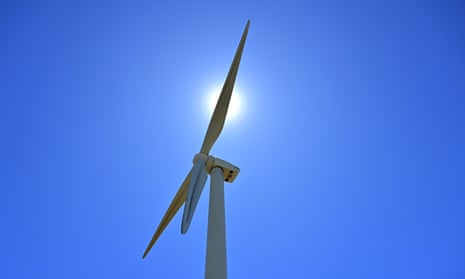Queensland is not just undergoing an energy transition, but a complete transformation from a legacy petrostate to a renewable energy superpower. Its staggering momentum has lessons for other states and the federal government.
Queensland accounts for 30% of national emissions, making its transition critical to Australia meeting our Paris agreement obligations. Last week, the Queensland government tabled its clean economy jobs bill, which proposes to legislate an ambitious 75% emissions reduction by 2035, a major advance on the existing weak 30% by 2030 target. Underpinned by its $62bn September 2022 energy and jobs plan, Queensland is now setting the pace, on track to leapfrog the federal government’s legislated emissions reduction pathway of 43% by 2030 relative to 2005.
The state is a case study on the catalysing effect of public capital expenditure in “crowding-in” private investment to energy transition. As Climate Energy Finance’s new report released this week details, Queensland’s nation-leading investment in transmission, large-scale low-cost renewable energy and consumer energy resources (CERs) is resulting in a tidal wave of public and private capital.
For example, the 2023-24 state budget included a massive $19bn in public investment over four years to deploy new wind, solar, storage and transmission capacity. This is turbo-charging the transition to renewables and reducing reliance on expensive, polluting fossil fuels. Alongside falling coal and gas prices, this is helping to drive a probable double-digit reduction in household and commercial electricity bills come 1 July 2024 – a key facet of the cost of living crunch crushing Australians.
Of course, while Queensland is investing strongly in a decarbonised future at home, it is still trying to walk both sides of the street, approving Whitehaven’s massive new 15Mtpa greenfield coalmine proposal at Winchester South, mainly for export. The climate science is clear: the world can’t afford any new fossil fuel projects. At least the state’s higher taxes on coal royalties are seeking to help aid the transition.
Public financing is flowing into large-scale pumped hydro storage projects and transmission networks, with the approximately 1,000km transmission highway CopperString 2032 set to unlock the north-west minerals province – one of the world’s largest reserves of critical minerals – as well as connecting regional communities and renewable energy resources to the grid. This pivot creates huge opportunities for regional employment and sets Queensland up to be a leader in value-added critical minerals and green hydrogen export. On Thursday, Queensland announced a $570m battery industry strategy aimed at creating more than 9,000 jobs by 2030.
Such investments also create momentum for the private sector. Just this week Rio Tinto announced a power purchase agreement with Windlab for its proposed 1,400MW Bungaban wind project, which comes after the announcement last month of a PPA for the Upper Calliope solar farm in Queensland, making Rio Tinto the biggest industrial buyer of renewable power in Australia, as it drives decarbonisation of its Gladstone alumina and aluminium refineries.
At a household level, Queensland is leveraging its competitive advantage in CERs, including fast-to-deploy rooftop solar PV, behind-the-meter battery storage, EVs and heat pump water heaters.
Queensland is the rooftop solar capital of the world. By the end of 2023, Queensland had six gigawatts (GW) of solar capacity across more than 1m rooftops (for comparison, the current total National Energy Market capacity including renewables and non-renewables is 64GW). An estimated 46% of dwellings across Queensland are now equipped with rooftop solar, according to the Australian PV Institute.
CERs give households agency and equity in electricity, as well as providing critical security and stability to the grid. Queensland is minimising the cost for households to adopt CERs. Its new $4,000 subsidy for residential batteries, for example, is part of a coordinated plan to put permanent downward pressure on energy bills as it decarbonises its energy system.
The wider lesson is for the federal government and state counterparts to share this vision and ambition. We are headed at last in the right direction; it’s time to accelerate. Economies the world over are embracing decarbonisation. Global leader China is greening its economy at an astonishing pace and the US government’s US$1tn Inflation Reduction Act is now driving massive deployment of renewables, jobs and economic growth.
Australia should take a lead from Queensland and its global partners and act now with a landmark, nation-building strategic investment of public capital into the Future Fund, to leverage the $15bn National Reconstruction Fund and $20bn Rewiring the Nation investment. CEF urges the government to commit another $100bn in the May federal budget. This would unleash hundreds of billions in private capital and speed nationwide decarbonisation commensurate with the scale of our opportunity to lead the world in cheap firmed renewables and dominate the market in energy transition materials, such as value-added critical minerals.
From petrostate to electrostate, as Dr Alan Finkel says.
Matt Pollard and Tim Buckley conduct analysis for Climate Energy Finance, an Australian public interest thinktank
